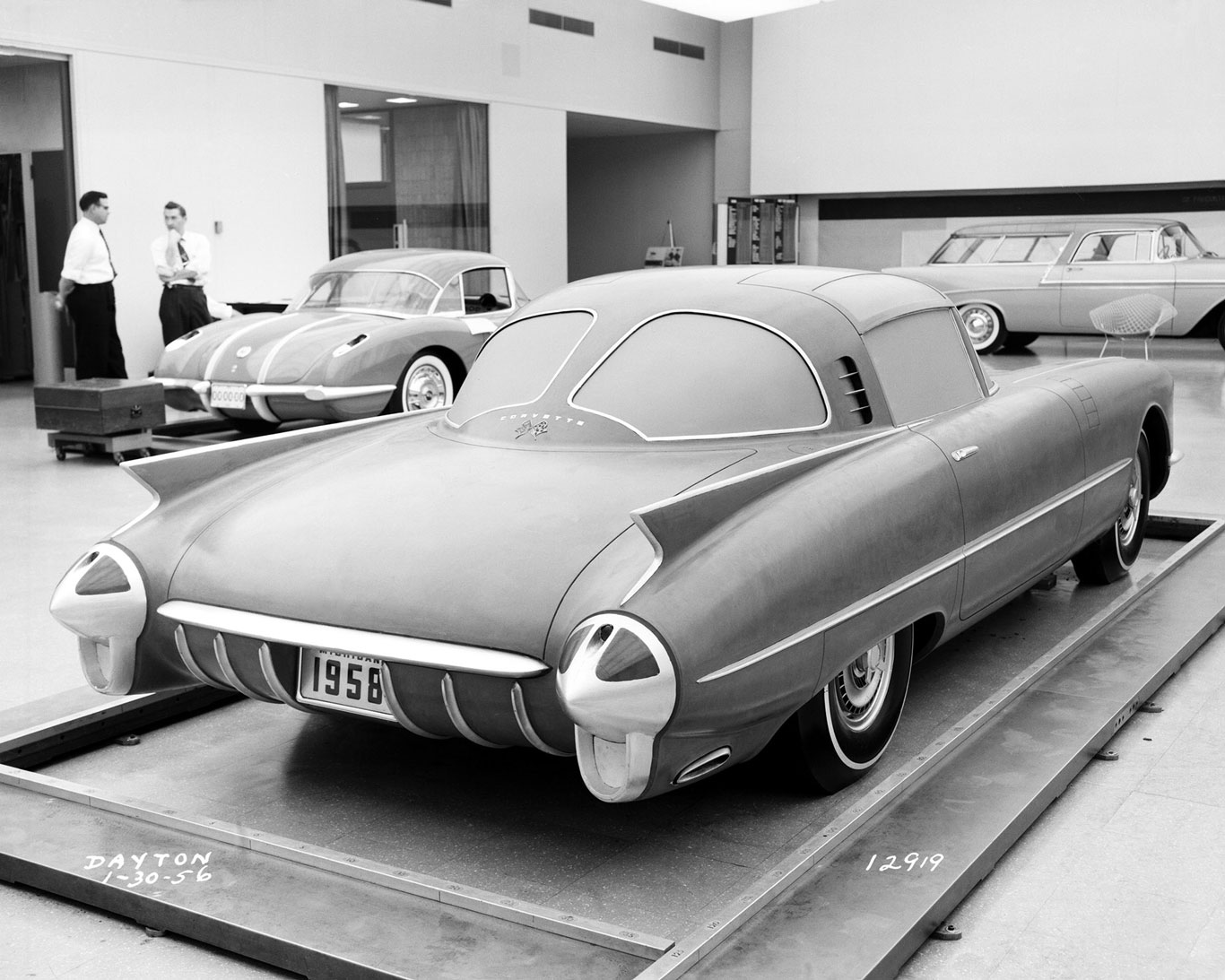Corvettes Gone Wrong (but Not Into Production)
A lot has gone right for the Chevrolet Corvette through its 63-year history, an evolution that’s seen it mature from a boulevard cruiser into a sports car institution with fans around the world. But the road to success usually has a few potholes along the way, and sure enough, there were some near misses for the Corvette. Here are a few models that weren’t quite ready for prime time.
1958 Split Window Prototype
After five years on the market, the Corvette was due for a complete design overhaul for the 1958 model year. Designers in Harley Earl’s studio got started in 1955 and had just completed a rather stunning concept car with a split-window fastback known as the Golden Rocket. It was a perfect projection into the future … of Oldsmobile.
But when Earl’s team tried to retrofit this concept into a future Corvette, the results were almost comical. The shape did away with the side coves of the ’56 and ’57 models in favor of the twin pontoon look of the Golden Rocket. More notably, the concept maintained the Golden Rocket’s split-window fastback and, yes, tail fins. The front had twin headlamps, a sloped nose and two wide nostrils on each side instead of the original toothed grille. Fortunately, better taste prevailed and the 1958 production Corvette reflected an evolution, keeping its essential shape with a heavy chrome treatment and a washboard hood. A completely fresh design would have to wait until 1963.
1963 Four-Passenger Sting Ray
The four-passenger Sting Ray was the not-so-great idea of Ed Cole, Chevrolet’s chief engineer. You can blame the Ford Thunderbird: The T-bird had clobbered the Corvette as a two-seater in sales and gained even more ground with four, thus forcing Cole’s hand to investigate a four-seat Sting Ray concept.
The move immediately inspired contempt on the part of Zora Arkus-Duntov, who felt that Corvette’s role was to be a halo for Chevrolet and a genuine sports car that would command worldwide respect. Anything short of that was a serious affront to the Corvette engineer’s sensibilities.
The completed concept was not pretty. With its longer wheelbase and raised roof, it was, as Zora quipped, “an ugly duckling.” The cause for the four-seater Corvette faded after GM chairman Jack Gordon sat in the back seat of a prototype and got stuck there when the seat mechanism broke. According to Larry Shinoda, a Corvette designer, “He stormed off and that was the end of the four-passenger Corvette.”
Ironically, Clare MacKichan of GM’s design staff, executed a beautiful four-passenger concept Chevrolet sport coupe seven years earlier, the Impala. This tasteful concept was designed from the beginning to seat four, and its distinctive toothed grille and voluptuous curves made for a smart execution of Corvette themes applied to a larger, personal car. Unfortunately, only its name survived.
XP-819 Rear-Engine Concept
Frank Winchell was another manager at Chevrolet R&D – and a rival of Duntov’s – who helped develop most of GM’s Corvair-based concept cars. After enjoying some success in putting a Corvair air-cooled engine behind the rear axle, Winchell wondered how a V-8 engine might fare in that position. So, according to historian Karl Ludvigsen, he took a prototype 1965 Monza GT coupe and extended its tail by eight inches.
The XP-819 was powered by a 327-ci Chevy small block that drove through a modified 1963 Pontiac Tempest transaxle. That placed 70 percent of the car’s 2,700 pounds on the rear wheels. Larry Shinoda designed a very handsome body, as he did for all the concepts during this period, with pop-up headlamps.
While the wheel diameters were identical front and back, the widths ranged from 6 inches at the front to 10 or 11 inches on the rear. The XP-819 could really dig in on a skid pad, recording as high as 1g, but the transient response was nearly uncontrollable at the limit. That ended its viability as a road car.
GM ordered the car to be destroyed by Smokey Yunick’s shop in Florida, but that didn’t exactly happen; it is now in the final stages of restoration by Kevin Mackay in New York. It will soon return to owner Mike Yager’s collection at Mid America Motorworks in Effingham, Ill.
1975 Corvette
The 1975 Corvette is the only production Corvette in the group, a result of it being the modern low point of Corvette performance. The 1975 model offered an emasculated 165 hp standard V-8. An optional L82 version turned out a whopping 205 hp. You can credit the catalytic converter among other smog controls. Dual exhausts were routed to a single converter and then split for a dual exit.
Conforming to new bumper regulations, the 1975 model also sported plastic bodywork front and rear, which created huge and awkward overhangs that made the wheelbase appear shorter. Sadly, the 1975 model year was the last year for a Corvette convertible until 1986.


